Alice Neel: People Come First, on view at the Metropolitan Museum of Art through August 1, 2021, could be an unexpectedly emotionally intense experience for those unfamiliar with her work. Visitors wind though rooms filled to the brim with large canvases, the portraits’ faces filled with uncomfortably mixed emotions. Even when ambivalent, the expressions are as vivid as the colors Neel uses. The Met’s space is almost bursting with her work, and parts of the exhibit ooze joy as wall labels emphasize her deep love of the craft of painting. Drawings and ephemera are interspersed between the paintings and span from the beginning of her career in the 1920s to some of her last works in 1984. This curatorial configuration demonstrates the temporal progression of Neel’s life and artistic voice. Curators often refer to Neel’s ‘incisive’ eye, an attribute present across all of her work. The show’s title is certainly apt, yet what I find to be most inspiring about this show is how it foregrounds the artist herself. Not only does this exhibition showcase Neel’s searing artistic eye, it also communicates her biography and political perspective. She was never shy about her feminist and Marxist attitudes throughout her life, and these positions are discussed in the wall text with as much candor as her loves and losses. This fits with Neel’s own divulgence of the self: despite only painting one solo self portrait, her work reveals as much of the painter as it does the sitter.
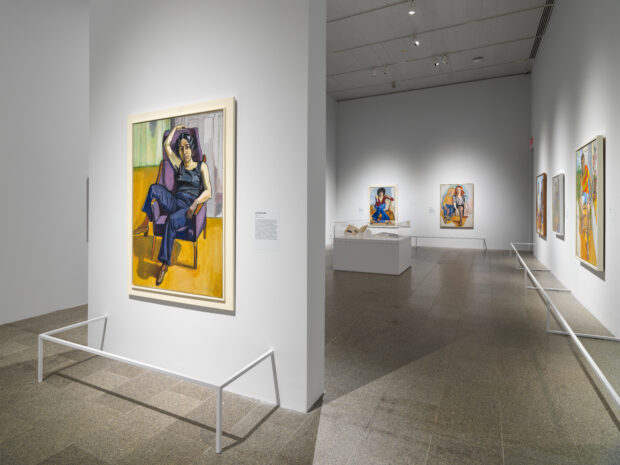
Her brush pinpoints form, sensuous spaces, and the possibilities of paint. ‘Full of life’ might be an easy descriptor of any exhibition of portraits, yet here it is irrefutably true. The structure of the show is relatively chronological. However, a narrative of stylistic evolution takes a backseat to a celebration of her mastery of form and subject. The long arc of Neel’s career enables one to observe the same children, friends, lovers, and colleagues depicted numerous times. There is an ever-changing tempo to the show, ebbing and flowing through the years, moving in and out of different apartments in the city. Some paintings are subdued, meditative, and slow, while others are filled with an anxious energy and bright color that fascinates. In Mike Gold (1952), for instance, the aging sitter in a rumpled suit fills an already small canvas. Papers are strewn before him, his fist clenched on the table. The cramped background is at a sharp angle which only intensifies the McCarthy-era dread of the Marxist advocate. The angles of his body are out of alignment with the frame of the canvas. A fire escape over his shoulder adds a layer of urgency as though an escape plan is forming inside this anxious canvas.

Portraits such as Elenka (1936) display a wholly different energy within the sitter. The otherwise-anonymous Elenka is so comfortable in her muted setting, that her expression welcomes a challenge, and seemingly pushes back at Neel’s artistic eye. She has the expression of someone who has spoken a great truth and is watching you react to it. In this way, the painting is emblematic of Neel’s oeuvre. Each portrait contains a raw energy that is an eclectic blend of the sitter and Neel’s personality. In one such as Elenka, it is difficult to see where the sitter ends and the artist begins—an exercise in looking that leaves you with a feeling as unnerving as it is truthful.

Often the relation between Neel and the sitter can be felt through expressions of discomfort or boredom. Mary Garrard emphasized that Neel’s method as a painter was to throw her subjects off their rhythm and ask probing questions right as the session began; for Garrard’s portrait, it was, “are you a lesbian?” Neel was deeply invested in her sitters, and would continuously talk as she painted. One work that illustrates this intimacy is Hartley (1966), in which the sitter, her son, seems to have inherited his mother’s incisive, penetrating gaze. Neel’s skill in conveying layered emotions adds a level of depth and humor—you can almost hear the young man’s annoyance. Subtle, muted colors and unfinished lines draw focus to the detailed rendering of his gaze and gesture—it’s a portrait filled with motherly adoration and unflinching truth. The real heart-stoppers of the show are the works that break from her recognizable subjects and her typical painterly, vivid style while still speaking to the inalienable truth of her biography. Well Baby Clinic (1928-29) and drawings from Neel’s time in a psychiatric facility gnash through their frames with raw, terrible emotion. In the same way one needs sadness to feel joy, these pictures of pain allow the humor and vivacity of her other work to come through even clearer.
One weak point of the exhibition is the Met’s use of their expansive collection to contextualize Neel in an “Art as History” section. The section highlights her studied influences, and brings in works such as Van Gogh’s Madame Roulin and her Baby (1888) to compare other mother and child images with her own. The juxtaposition seems designed to invite comparisons reminiscent of spot-the-difference puzzles. In a space filled with works by a proclaimed feminist artist—a woman with a career spanning over six decades—the need to compare her work to that of male titans of art history falls flat. Neel can stand just fine on her own, if the attitude of her Self-Portrait (1980) is any indication. The curatorial impulse to compare and contextualize might have been better served by bringing in works from the generations of painters inspired by her oeuvre. Setting up Neel as a progenitor, rather than a descendant of another tradition, would lean much more into the very ideas of unique humanity that influenced her work.

A blown-up photograph of Alice Neel with her granddaughter, surrounded by her canvases, watches over the doorway to the exhibition. Several of the paintings in this photograph are not even in this exhibition, reiterating the sheer breadth of her oeuvre. In the image she is almost swallowed by the monumental canvases, yet carries on reading in her studio, calm. She might be described as unfazed, the people in these paintings as ordinary to her as the coats in her closet. Alice Neel was in control of her style, her sitters, and herself; and the further one enters her personal canon the harder it is to stay neutral. I would challenge anyone walking through the exhibition to hold her same steady expression.


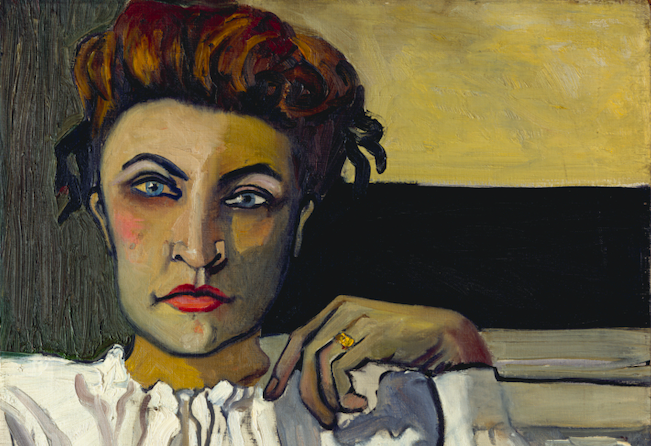


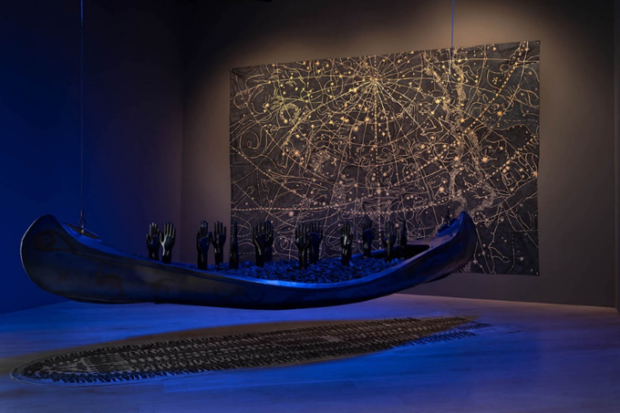

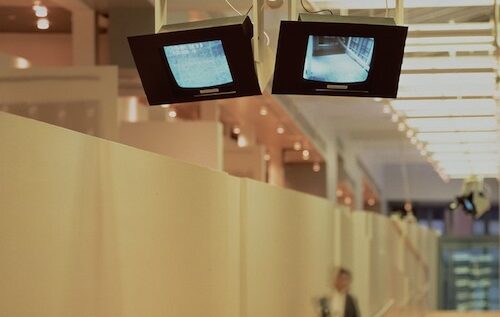






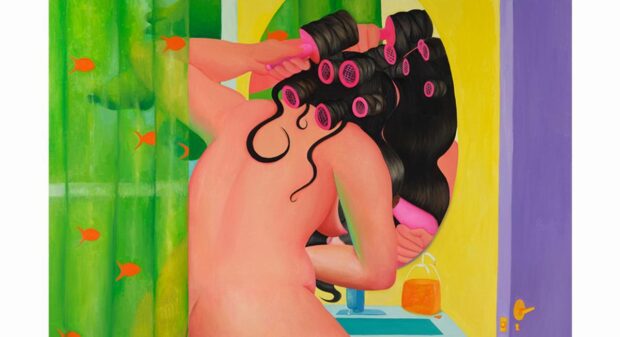




Be First to Comment